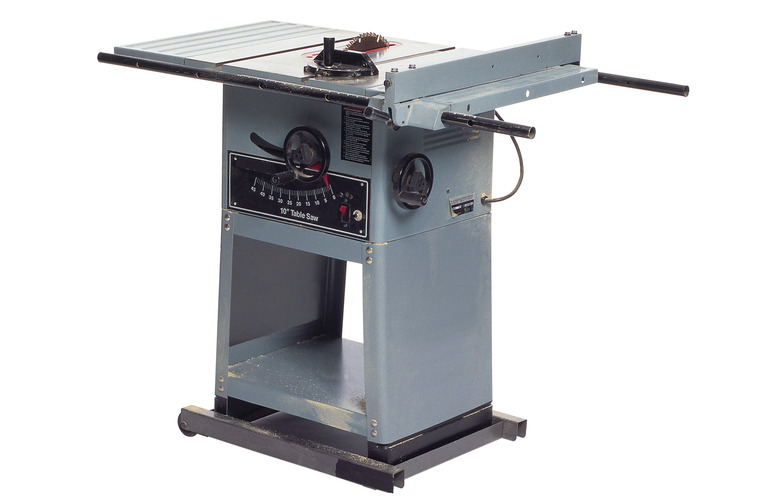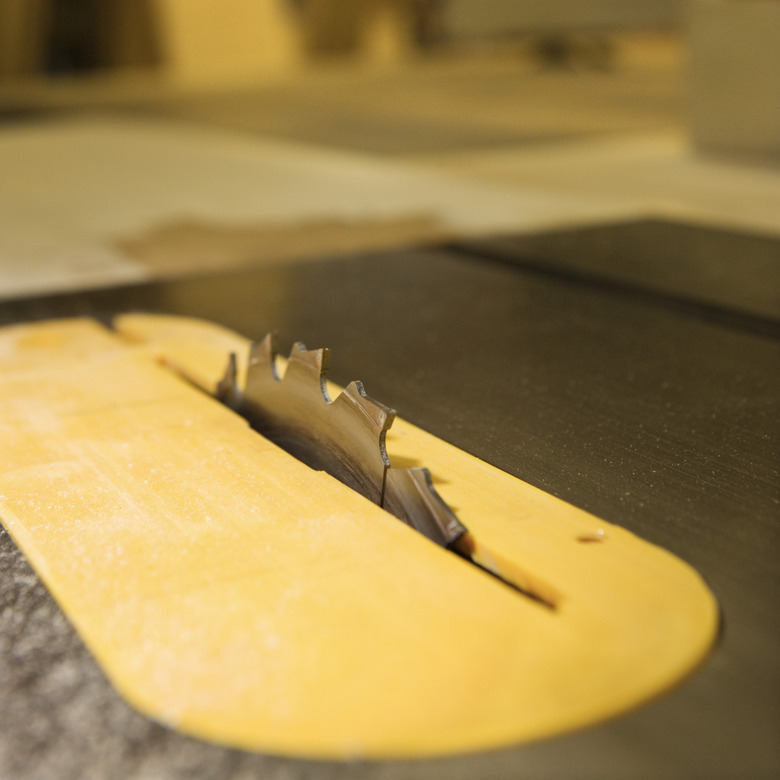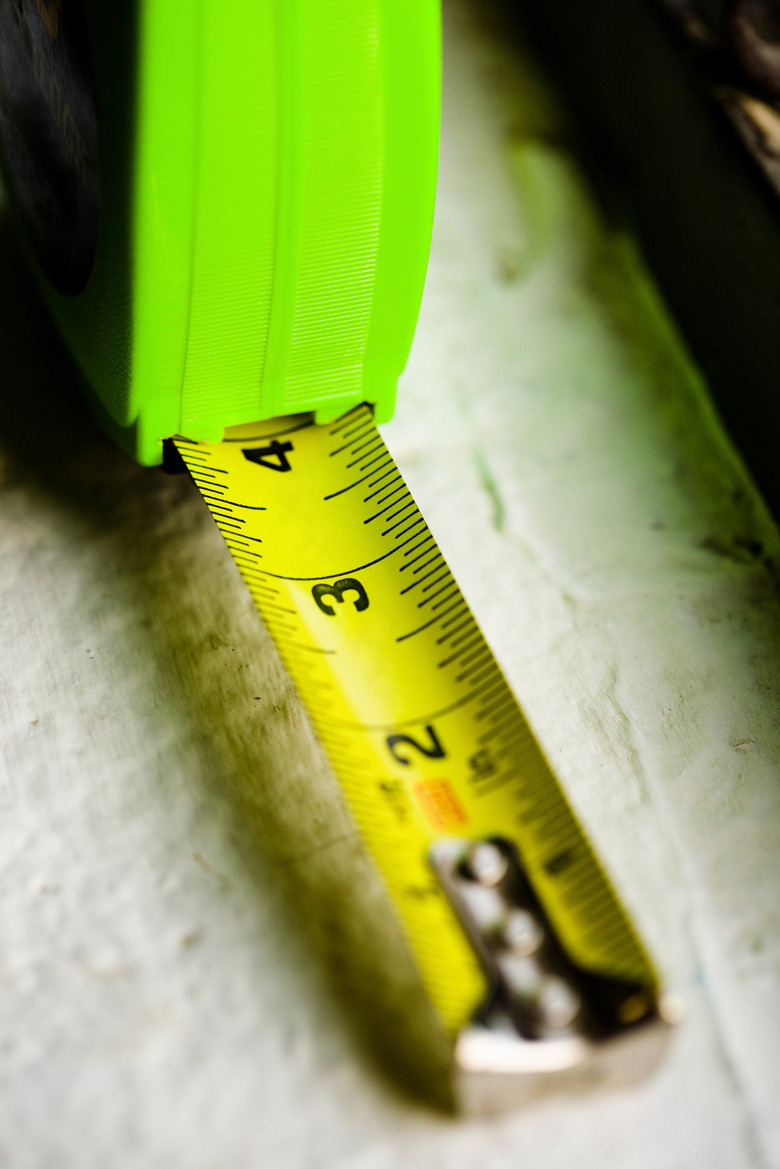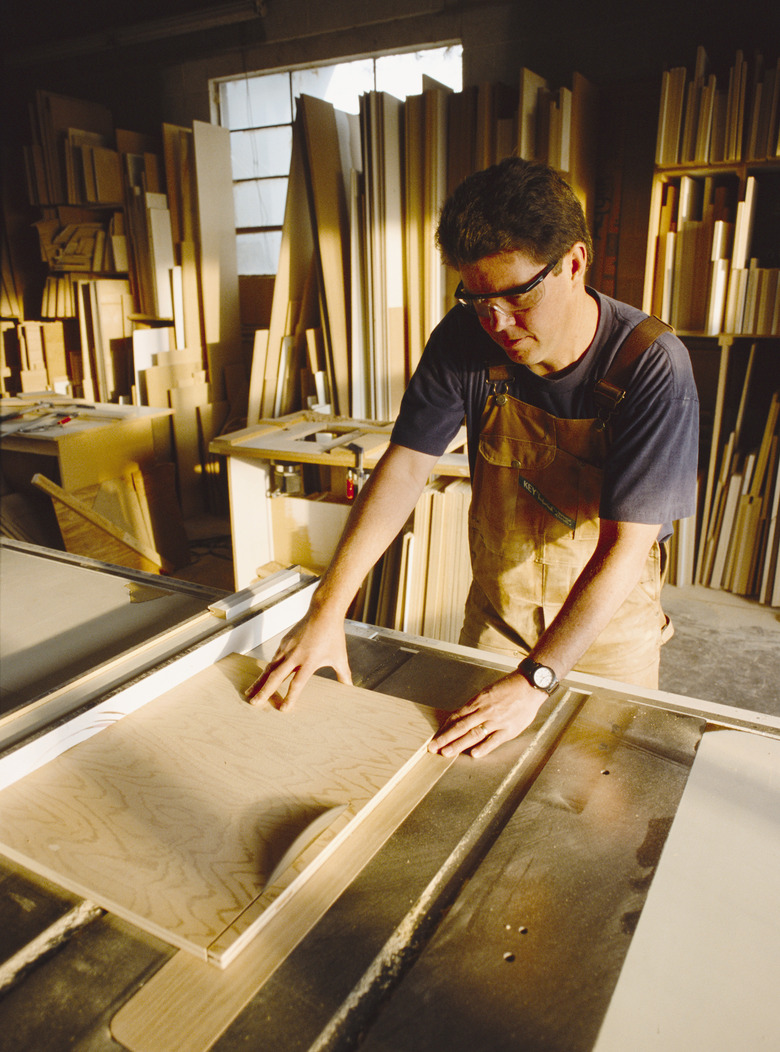How To Cut Thermoplastic
Things Needed
- Table saw
- 80-tooth carbide tipped saw blade
- Tape measure
- Jigsaw
Thermoplastic is a polymer plastic that becomes flexible when heated and solid when cooled. Common plastics such as Acrylic are thermoplastics. Because thermoplastics such as Acrylic can crack when being cut, care must be taken when working with this type of material. Plastics retailers can cut plastic to size but there is often a cutting charge associated with this service. Use a few common shop tools to cut thermoplastics yourself.
Step 1
Change the saw's blade. Thermoplastics require a sharp 80-tooth carbide tipped blade. Remove the blade cover. Remove the old blade and replace it with the carbide-tipped blade, following the saw manufacturer's instructions for blade replacement. Use a new blade for cutting thermoplastics.
- Thermoplastic is a polymer plastic that becomes flexible when heated and solid when cooled.
- Because thermoplastics such as Acrylic can crack when being cut, care must be taken when working with this type of material.
Step 2
Set up the table saw. Thermoplastics, such as Acrylic, tend to crack when under great pressure. Set the saw's fence so it is parallel with the saw blade. Raise the blade to its maximum height. Set the saw's fence 6 inches from the blade. Measure the distance from the front of the blade to the fence and from the back of the blade to fence. If the fence is parallel with the blade, both measurements will be exactly 6 inches. Follow the saw's operating manual to adjust the blade if the measurements do not equal 6 inches.
- Thermoplastics, such as Acrylic, tend to crack when under great pressure.
- Set the saw's fence so it is parallel with the saw blade.
Step 3
Adjust the blade height. Most plastics are thin. Thin plastics are flexible so the blade height must be adjusted to compensate for this. Set the blade height at three times the thickness of the plastic being cut. If the plastic is ¼-inch thick, the blade height will be 3/4-inches.
Step 4
Turn the saw on. It is important to allow the saw to run for at least two minutes before cutting the plastic. If the saw is not running at full speed, the plastic could melt as it is pushed through the blade.
- Thin plastics are flexible so the blade height must be adjusted to compensate for this.
- If the saw is not running at full speed, the plastic could melt as it is pushed through the blade.
Step 5
Set the blade's distance from the fence. Typical carbide-tipped saw blades remove 1/8-inch of plastic when they cut through the material. Set the blade's distance from the fence by measuring the distance from inside edge of one of the carbide tips to the fence. Push down on the fence clamp to tighten the fence into position.
Step 6
Position the plastic against the fence. Push the leading edge of the plastic being cut against the face of the fence so at least 6 inches of plastic rests evenly against the fence.
Step 7
Cut the plastic. Thermoplastics have lower melting points than other materials. The rate at which the plastic should be fed through the saw is 3 to 4 inches per second. This prevents melting and chipping.
- Set the blade's distance from the fence.
- Push the leading edge of the plastic being cut against the face of the fence so at least 6 inches of plastic rests evenly against the fence.
Tip
For cutting out small notches and angles, use a jigsaw. Purchase a fine tooth blade with 10 to 13 teeth per inch.



